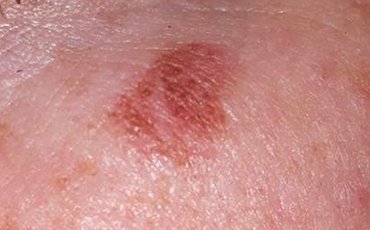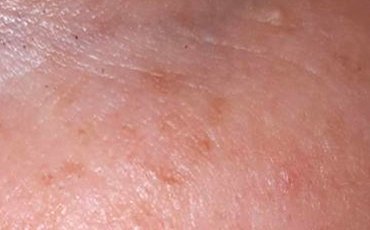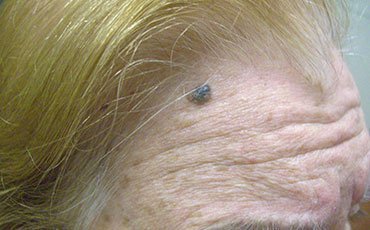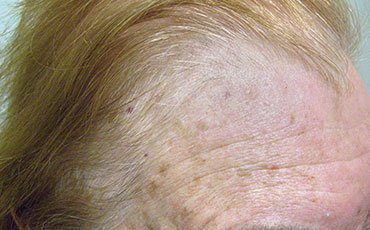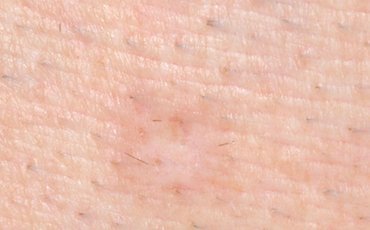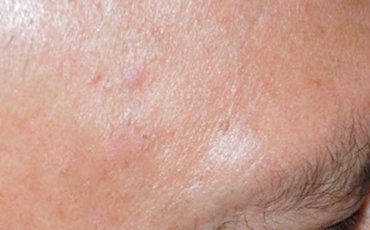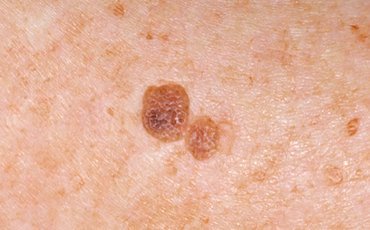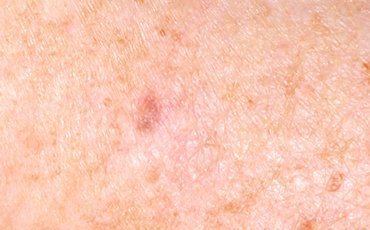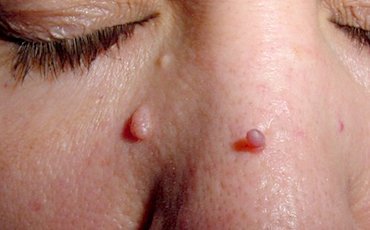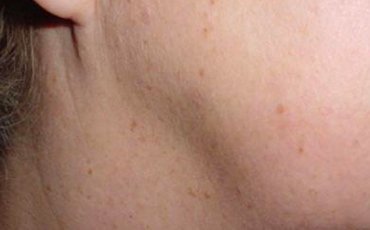
Introduction
Cryotherapy, a well-established treatment for skin lesions, has seen a significant advancement with the introduction of the CryoPen. The Cryopen uses nitrous oxide to deliver a precise and controlled freezing effect, offering an alternative to liquid nitrogen-based cryotherapy. The CryoPen has gained attention for its efficacy, safety, and patient comfort in treating various skin imperfections.
What is cryosurgery?
Cryosurgery is a minimally invasive procedure that uses extreme cold to destroy unwanted tissue. It effectively treats various benign and malignant skin lesions through rapid freezing, causing cell death (cryonecrosis). While necrosis begins at -27°C, treatment requires temperatures of -64°C or lower to ensure complete lesion destruction. This well-established method offers advantages like minimal scarring, reduced infection risk, and faster recovery compared to traditional surgery.
The Difference Between Nitrous Oxide and Liquid Nitrogen
Nitrous oxide and liquid nitrogen are both used in cryosurgery but differ in temperature and precision. Nitrous oxide, at -89°C, effectively freezes and destroys targeted cells without harming surrounding tissue. Liquid nitrogen, at -196°C, poses a higher risk of collateral damage due to its extreme cold. The CryoPen, a nitrous oxide device, utilises a precise applicator for focused gas flow, targeting only the lesion with pinpoint accuracy. In contrast, cryosurgery with liquid nitrogen often employs less precise tools like cryoprobes or cotton-tipped applicators. This combination of safety and precision makes nitrous oxide the preferred choice in modern cryosurgery.
What is the CryoPen?
The CryoPen is a handheld cryosurgical device designed to treat benign and malignant skin lesions. It delivers a fine jet of nitrous oxide directly to the targeted area, causing rapid freezing and destruction of the abnormal tissue. Unlike traditional cryotherapy, which often uses a bulkier liquid nitrogen applicator, the CryoPen offers greater precision and control, making it ideal for treating small or delicate lesions.
Advantages of the Cryopen
Precision and Safety
The CryoPen’s design ensures pinpoint accuracy, making it suitable for treating lesions in sensitive areas such as the face or near the eyes. Its targeted application minimises the risk of collateral damage to surrounding tissue,
Patient Comfort
CryoPen treatments are generally well-tolerated, with most patients describing the sensation as a brief stinging or burning. This is often perceived as less uncomfortable than traditional liquid nitrogen application, contributing to improved patient satisfaction.
How does the CryoPen Work?
The CryoPen operates on the principle of cryonecrosis. The rapid freezing induced by nitrous oxide leads to intracellular ice formation, cell membrane disruption, protein denaturation, and cell death. Cryotherapy is effective against various skin conditions because it can destroy targeted tissue while sparing surrounding healthy skin.
Skin Lesions that can be treated with the CryoPen
The CryoPen’s versatility makes it an informed choice for treating many skin lesions.
Warts

Common warts are small, rough, hard lumps that often develop on the hands and feet but can be found anywhere on the body. They can vary in size and appearance and often grow in clusters. Common warts are typically round or oval-shaped, firm and raised, and have a rough, irregular surface. Multiple studies have shown high success rates in wart removal with the CryoPen, which often requires fewer treatment sessions than other methods.
Skin Tags

Skin tags are small, soft, skin-coloured growths that hang off the skin. They are very common and harmless. Skin tags can vary in colour and size, from flesh-coloured to dark brown and from a few millimetres up to 5cm wide. They can be slightly raised, have a stalk like a mushroom, or have a flat neck. Skin tags are commonly found on the neck, armpits, under the bra area, groin, eyelids, or under the folds of the buttocks.
Age and Sunspots, Liver spots

Lentigines are harmless, flat, brown spots on the skin that do not darken with sun exposure. They range from 5 to 20 millimetres and can be round, oval, or irregularly shaped. The colour can vary from light to dark brown depending on skin tone. Lentigines are often found on the shoulders of young people, particularly those with sun exposure. In older individuals, they commonly appear on sun-exposed areas like the backs of the hands, forearms, face, and neck.
Cherry Angioma

Cherry angiomas, also known as Campbell de Morgan spots or blood spots, are benign (non-cancerous) overgrowths of blood vessels in the skin. They do not fade when pressed and typically appear as red to purple papules or plaques. Cherry angiomas can occur on any part of the body but are more commonly found on the mid-torso, abdomen, and chest. They usually increase in number from the age of 40.
Milia

Milia are tiny, raised bumps on the skin that appear pearly-white or yellowish. They are usually 1 to 2 millimetres in size and are filled with keratin, a type of protein. Milia are often found around the cheeks, nose, eyes, eyelids, forehead, and chest. They commonly occur in dry skin areas where secretions cannot reach the surface. In areas where the skin is not dry, milia may be caused by improper product use.
Seborrheic Warts or Keratosis

Seborrheic warts, also known as seborrheic keratoses, are common, harmless skin growths caused by a build-up of keratinocyte cells. They usually have a pigmented, rough surface ranging from 1mm to several centimetres across. Seborrheic warts typically appear as warty-looking lesions that seem attached to the skin’s surface. Sometimes, they resemble small, pigmented skin tags. These growths can appear anywhere on the body but are most often found on the face and scalp.
Patient Experience with CryoPen
Patient feedback consistently highlights the CryoPen’s speed, convenience, and minimal discomfort. The procedure typically takes only a few seconds, and patients can resume their normal activities immediately after treatment.
Safety and Side Effects of CryoPen
CryoPen is effective and generally safe for all skin types. Potential side effects, such as temporary redness, swelling, or blistering, are usually mild and self-limiting, providing reassurance about its safety.
CryoPen in Clinical Practice

Its precision, versatility, and patient-friendly nature have made the Cryopen popular for practitioners and patients. However, proper training and certification are required to use the CryoPen effectively and safely. It is increasingly being integrated into standard dermatological practice to treat various skin lesions.
Conclusion
The CryoPen represents a significant advancement in cryosurgical technology. Its precise application, effectiveness, and patient comfort make it a valuable tool for treating various skin lesions. As research and clinical experience grow, this treatment is expected to be increasingly important in dermatological care.
Cryosurgery and CryoPen: FAQ
Cryosurgery
What is cryosurgery?
Cryosurgery is a medical procedure involving the controlled destruction of unwanted tissue using extreme cold. This process, known as cryo-necrosis, involves rapidly freezing the tissue to -27°C or lower. The intense cold forms ice crystals within the cells, breaking the cell membrane and destroying the cellular structure. This leads to blistering and disruption of the local blood supply, effectively eliminating the targeted tissue.
What are the benefits of cryosurgery?
Cryosurgery is a quick procedure, often completed within seconds. It does not require anaesthesia, reducing the risks and recovery time associated with other surgical methods. Additionally, it typically results in minimal scarring. After treatment, you can resume normal activities, including work, bathing, and swimming. There is no cutting, bleeding, suturing, or risk of infection.
What types of lesions can be treated?
Cryosurgery can treat a variety of benign skin lesions, including verrucae (warts), skin tags, solar lentigo (sunspots), pigmented spots, actinic keratoses, seborrheic keratoses, hemangiomas, molluscum contagiosum, condyloma, and plantar warts.
Can I have treatment anywhere on the body?
While cryosurgery can be performed on most body areas, care should be taken when treating regions with very thin skin or where cosmetic appearance is crucial, such as the face, ears, scrotum, and the lateral surfaces of fingers.
CryoPen Treatment
How much does a treatment cost?
CryoPen treatments typically start from £60, but the exact price depends on the number of lesions to be treated.
How long does a treatment take?
The duration of a CryoPen treatment varies. Freezing viral infections like small flat warts may take 5 to 10 seconds, whereas full-thickness plantar warts can take up to 45 seconds. Generally, most lesions require 2 to 30 seconds of freezing.
What preparation is needed before treatment?
No specific preparation is needed before CryoPen treatment, except in cases of warts or verrucae.
Do you need anaesthesia?
No anaesthesia is required for CryoPen treatment, as the extreme cold acts as a numbing agent, making the procedure tolerable.
What are the considerations before treatment?
Feel free to consult with us before proceeding with CryoPen if you have:
- Impaired sensation
- Impaired circulation
- Superficial nerves
- Open wounds
- Skin cancer
- Hypersensitivity to cold
- Cardiac disease
- Moles (must be assessed and approved beforehand).
CryoPen Treatment Risks
Can anyone have a CryoPen treatment?
Yes, but skin types and the location of the lesion should be carefully considered before treatment.
What happens if the lesion is frozen for too long?
Prolonged freezing can cause more extensive damage to connective tissue and the surrounding vascular and lymphatic structures. This increases the risk of scarring and prolongs the healing process.
Is there a chance of pigmentation changes after treatment?
Yes, both hypopigmentation (lightening) and hyperpigmentation (darkening) may occur after cryosurgery. These changes generally last a few months but can be longer-lasting.
What are the risks for dark-skinned patients?
Melanocytes, the cells responsible for pigment, are sensitive to cold injury. Dark-skinned patients should be aware of the risk of permanent pigment loss.
Can CryoPen treatment be used on children?
Yes, but parental consent is required to treat children.
Common Concerns
Is the treatment painful?
If the ice penetrates the deeper layers of the lesion, you may experience pain. This pain typically signals the appropriate time to stop treatment. Some residual stinging may occur for a few minutes after treatment.
Will there be scarring?
CryoPen treatment usually results in minimal scarring compared to other lesion removal methods, as it causes less damage to connective tissues. Hypopigmented areas may appear but will typically darken with new tanning over time.
How long will the lesion take to heal?
Healing time varies. A blister may form and last up to 5 days. After the lesion scabs over, healing generally takes 2 to 6 weeks, depending on the depth of the wound and the duration of freezing.
How many treatments are needed?
Most lesions respond to a single treatment. However, deeper lesions may require multiple, more aggressive treatments for complete removal.
How long will the results last?
For most lesions, cryosurgery offers permanent removal. However, some lesions are more challenging and may need repeated treatments.
Will there be permanent discolouration?
Both hypopigmentation and hyperpigmentation can occur, usually lasting a few months. In some cases, particularly for dark-skinned individuals, permanent colour loss may occur.
Will activities be limited after treatment?
There are no significant activity limitations post-treatment. You should protect the treated area from damage or abrasion. Activities like swimming and showering are generally permissible.
What if the blister pops?
If a blister forms and pops, it is advisable to use an antibiotic cleaning solution and cover the area with a bandage to promote healing.
What follow-up is necessary?
Follow-up appointments should be scheduled at 2-week intervals to monitor results and determine if further treatment is needed.
